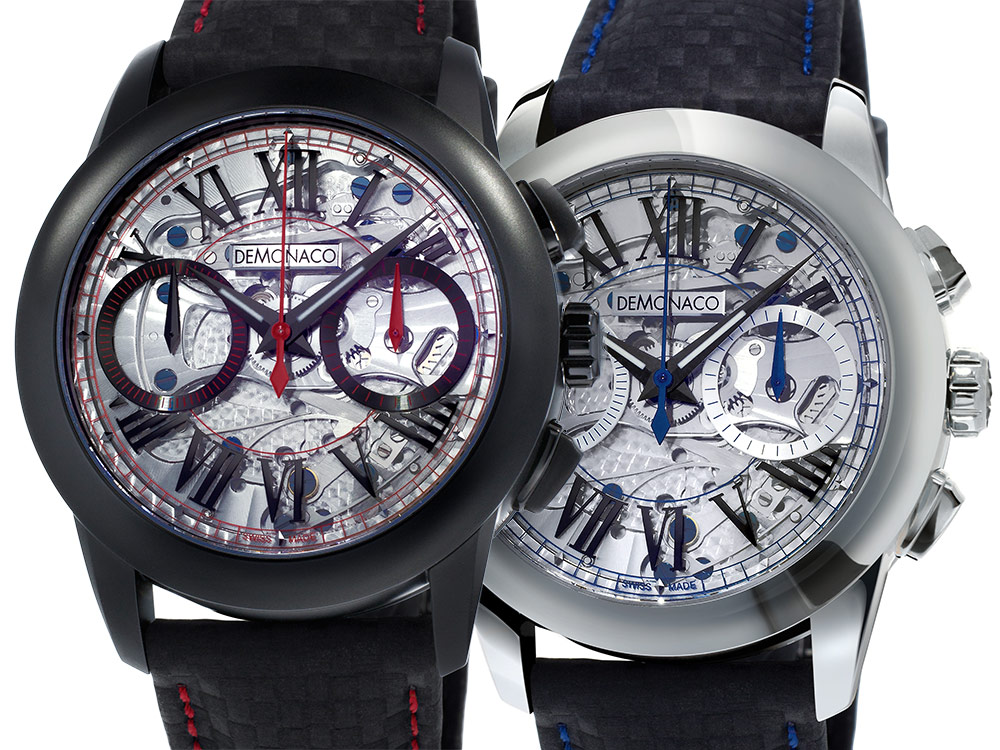
Ateliers deMonaco, the high-end arm of Frederique Constant’s umbrella of watch brands, recently added two new steel references to their Admiral Chronographe Flyback line of watches. The new watches’ sapphire crystal dials exhibit the movement beneath in a style that is something of a brand signature but previously only offered in this collection with gold cases for about twice the price. In addition to being now more affordable in steel, the new Ateliers deMonaco Admiral Chronographe Flyback Armure cases feature a hardening treatment to make the steel more scratch-resistant.
Ateliers deMonaco produces watches in very limited quantities and remains relatively niche. Now a part of the Citizen group following its acquisition of Frederique Constant, this is where the people behind Frederique Constant and Alpina can pursue their horological fancies with less financial restriction, resulting in Geneva Seal-certified watches, various bespoke and tourbillon watches, and the like.
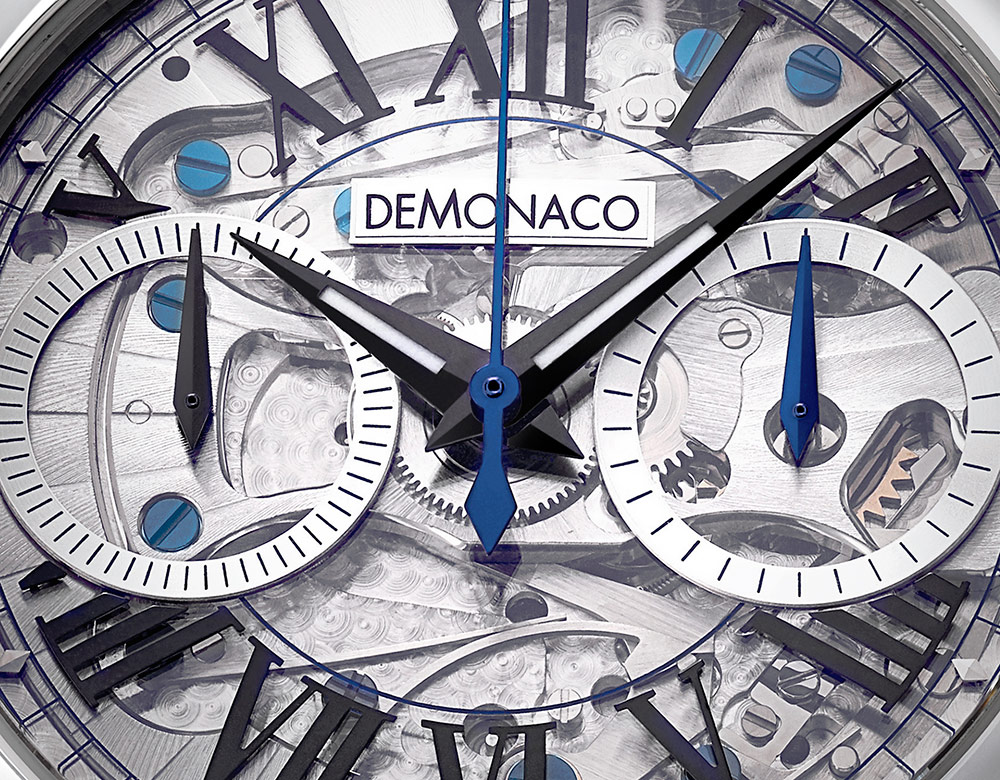
The highlight of the new Ateliers deMonaco Admiral Chronographe Flyback Armure is in its case material, or rather, the treatment of it. The 42mm case is made of steel hardened by a process the brand calls “Armure.” While details are somewhat scarce, we understand that the technique is a chemical process that increases the hardness of the steel’s surface up to a claimed 1200 HV (Vickers, that is, a unit for measuring the hardness of metals). This compares to a hardness of around 220 HV for standard stainless steel, making the Armure-treated steel more than five times harder. As a treatment rather than a coating, this sounds similar to the tegimented steel that German watchmaker Sinn is known for, and the promise is increased and significant scratch-resistance.
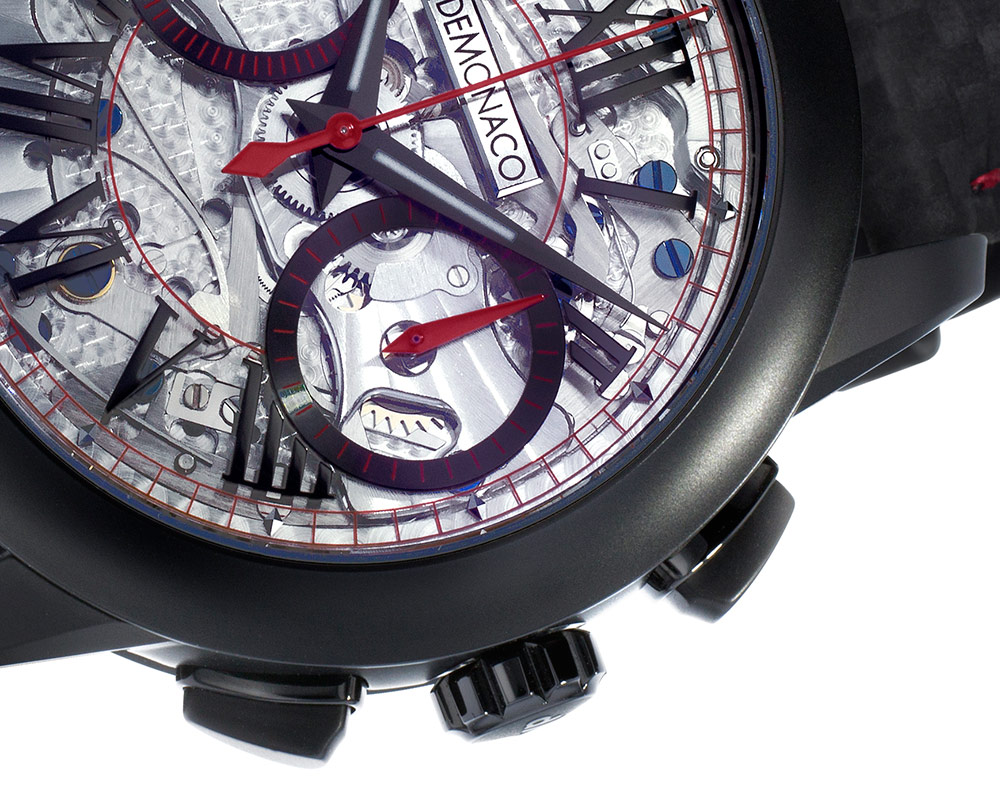
At 42mm wide by 13.3mm thick, the case is substantial but not uncommon in its dimensions for a sporty chronograph watch. The size and wide bezel back up the sporty, modern design of the dial and case finishing. The Ateliers deMonaco Admiral Chronographe Flyback Armure steel case is offered in two options; polished steel or with black DLC treatment. It comes with a screwed-down display case back and is rated to 30m of water resistance.
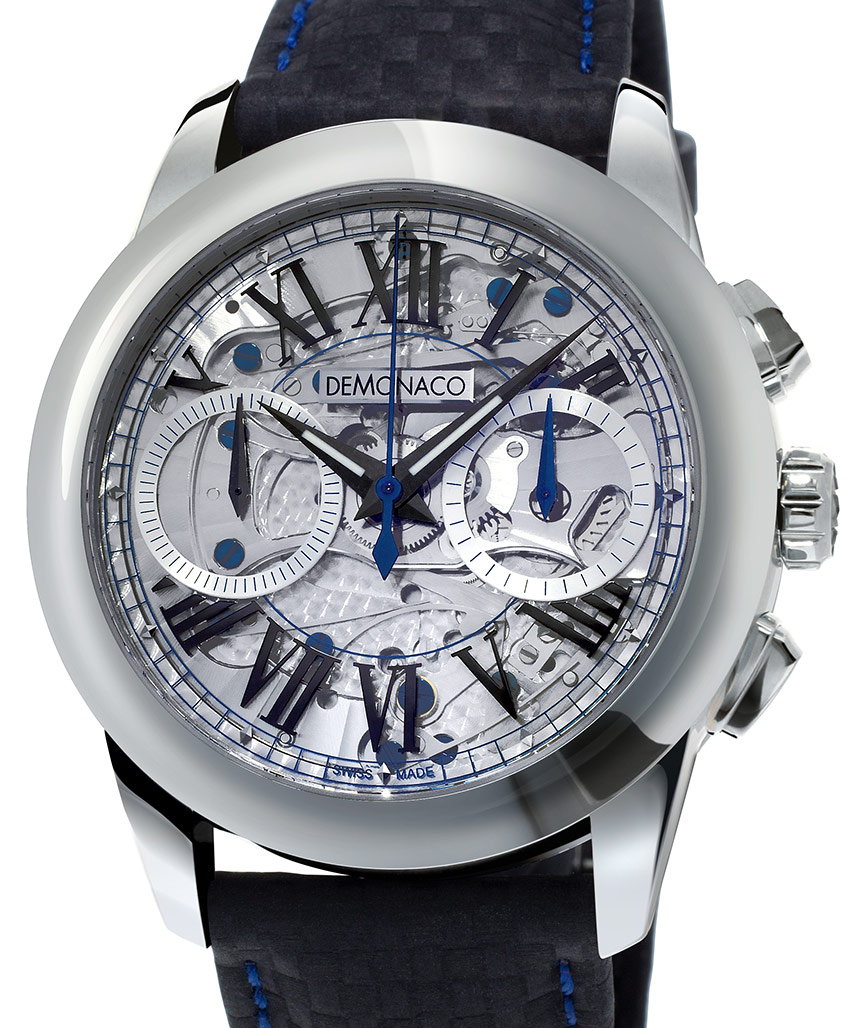
Housed within the case and largely visible from both sides is the in-house caliber dMc-760 movement with flyback (meaning the chronograph hands can be reset to zero without stopping) chronograph complication. The movement is developed, produced, and assembled in the brand’s manufacture in Switzerland, and it appears very similar to movements found in Frederique Constant and Alpina watches, though likely with at least a few modifications. In all likelihood, the dMc-760 is more or less the same in-house movement found in the Frederique Constant Flyback Chronograph Manufacture, which is also found in the Alpina Alpiner 4 Flyback, or at least very similar. The movements in each of those watches are labeled FC-760 and AL-760, respectively. They also share similar performance specs with all three movements beating at 28,800 bph with 38 hours of power reserve and 32 jewels.
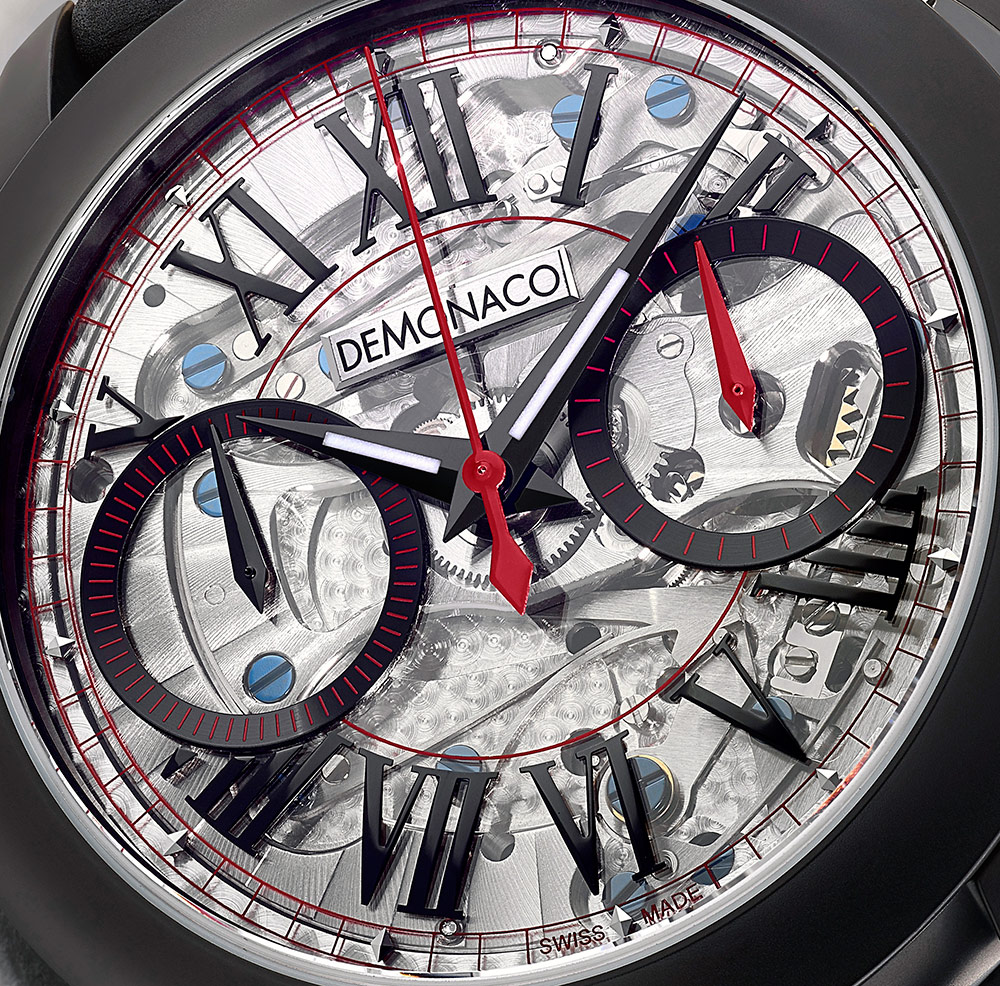
While the use of a common technical platform makes commercial sense, the finishing on the dMc-760 is naturally going to be a step above that found in Frederique Constant or Alpina watches. In addition to plenty of circular graining on the bridges, the rotor is made of 22k gold and hand-engraved with Monaco’s Coat of Arms. The brand states that, despite its base in Switzerland, Monaco’s Coat of Arms is used because the brand draws its design inspiration from the principality of Monaco. There are no case back images available at the moment, a perplexing decision when the brand seems to emphasize the quality of movement decoration and finishing.
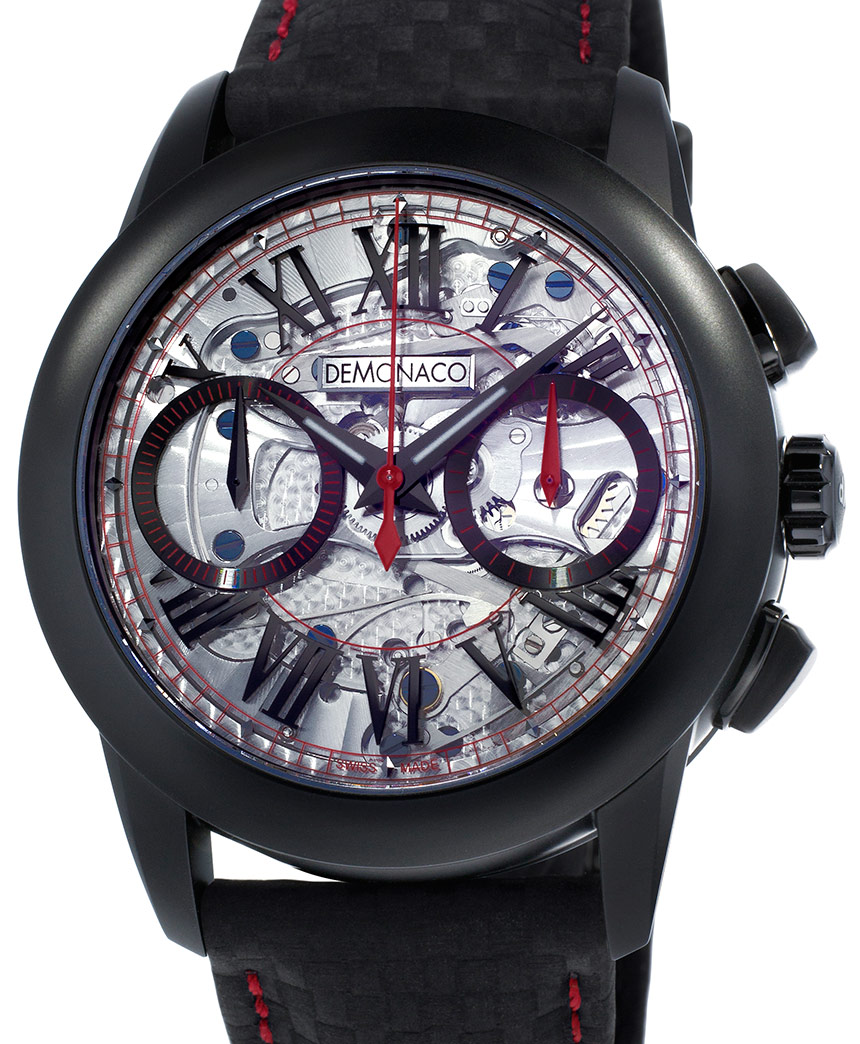
The other interesting design element of this watch is the dial, which is made from sapphire crystal – so, although it displays the movement underneath, we cannot accurately call it “skeletonized.” The crystal is polished and completed with applied Roman numeral markers and PVD treatment for the sub-dials. It has a classic two sub-dial layout with running seconds at 9 o’clock and chronograph minutes at 3 o’clock. Thankfully, Ateliers deMonaco has left out a date indicator (seen in the Frederique Constant as a third sub-dial) and a tachymeter or similar scale. I say thankfully because more clutter on the dial could easily compromise legibility, which is always a challenge anyway with the backdrop of a mechanical movement.
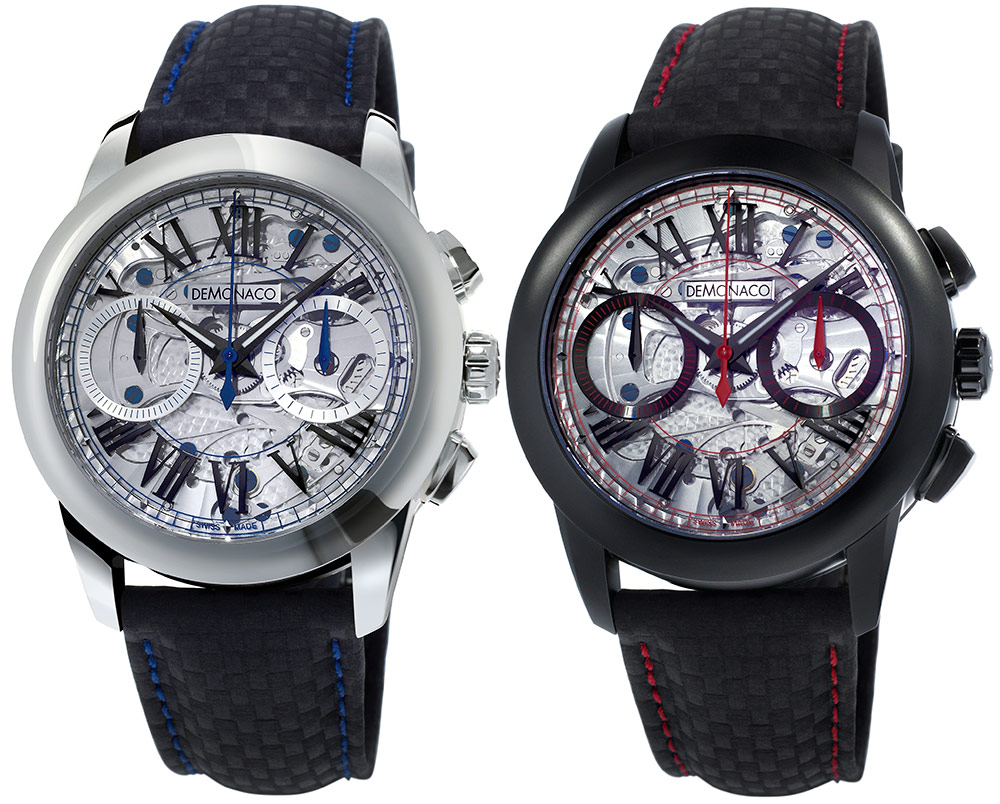
The purpose of the sapphire dial is to afford the owner a view of the movement as well as to make the prestige of a high-end mechanical watch more visible to others. An appreciated effort has been made to improve legibility with the use of contrasting black markers and hands, but we will need to see the watches in person to judge how easy they actually are to read. There are two variants on offer – the first is in a black DLC case with black PVD sub-dials and red chronograph seconds and minute hands, and the other is with a polished steel case with silver sub-dials and blue chronograph hands.
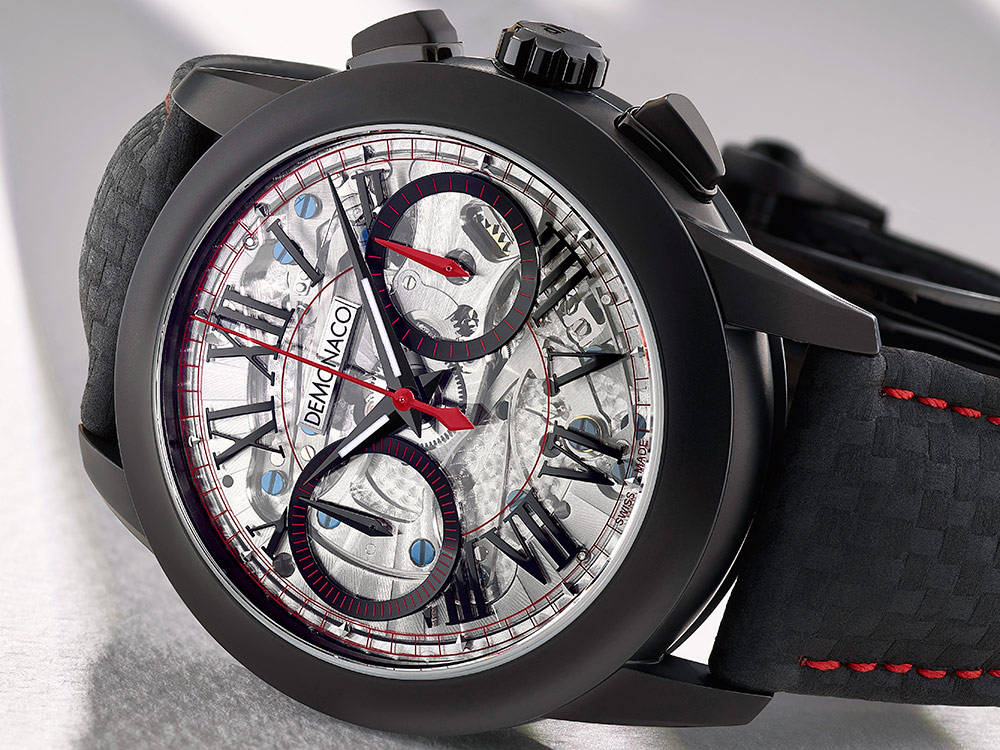
The new Ateliers deMonaco Admiral Chronographe Flyback Armure watches are definitely different and make use of interesting materials and techniques. The Ateliers deMonaco Admiral Chronographe Flyback Armure watches are produced in limited runs of 88 pieces each and are available with a black leather strap for $13,500
for the polished steel case and $15,300 for the DLC-treated black case. ateliers-demonaco.com
